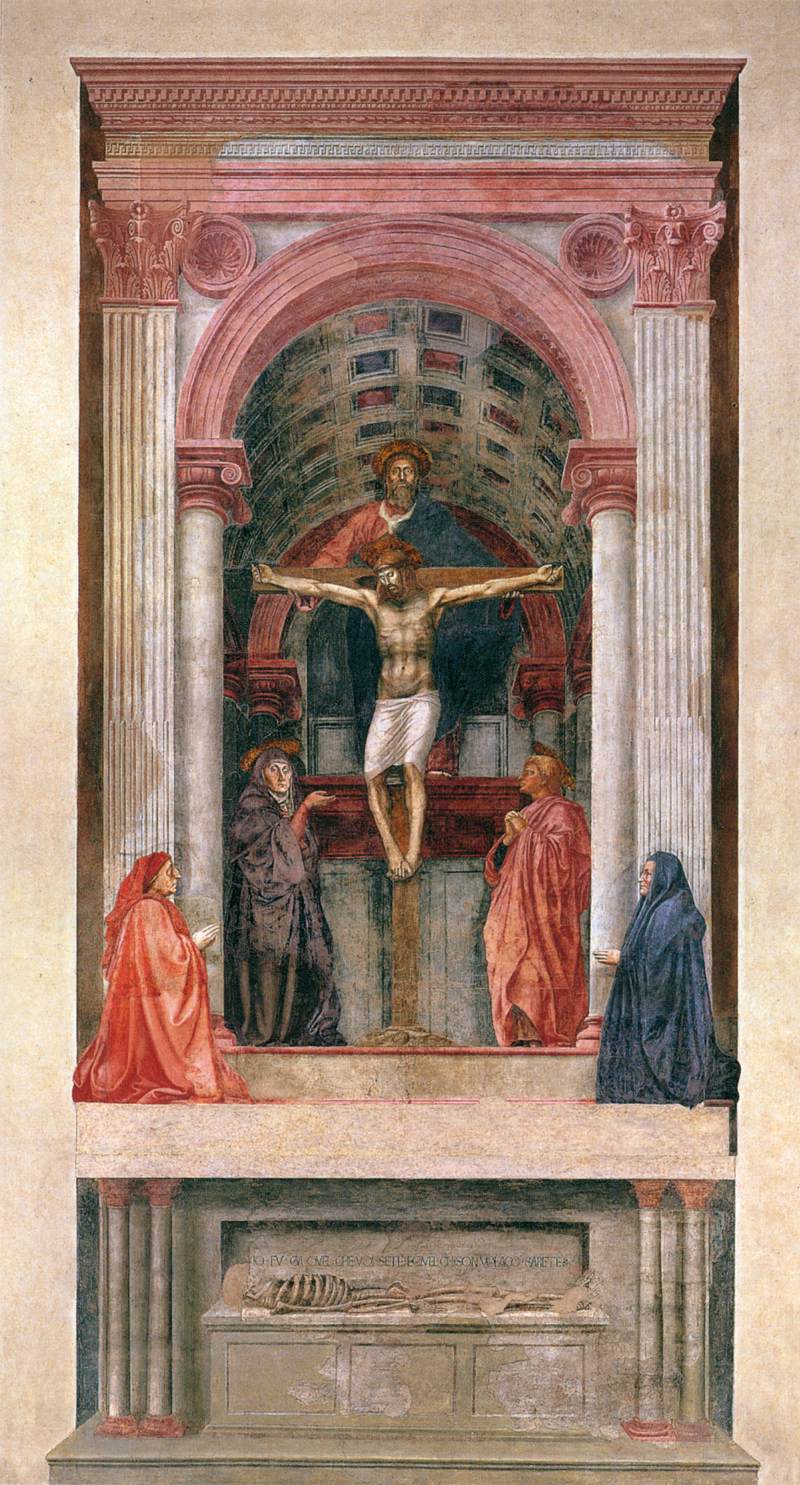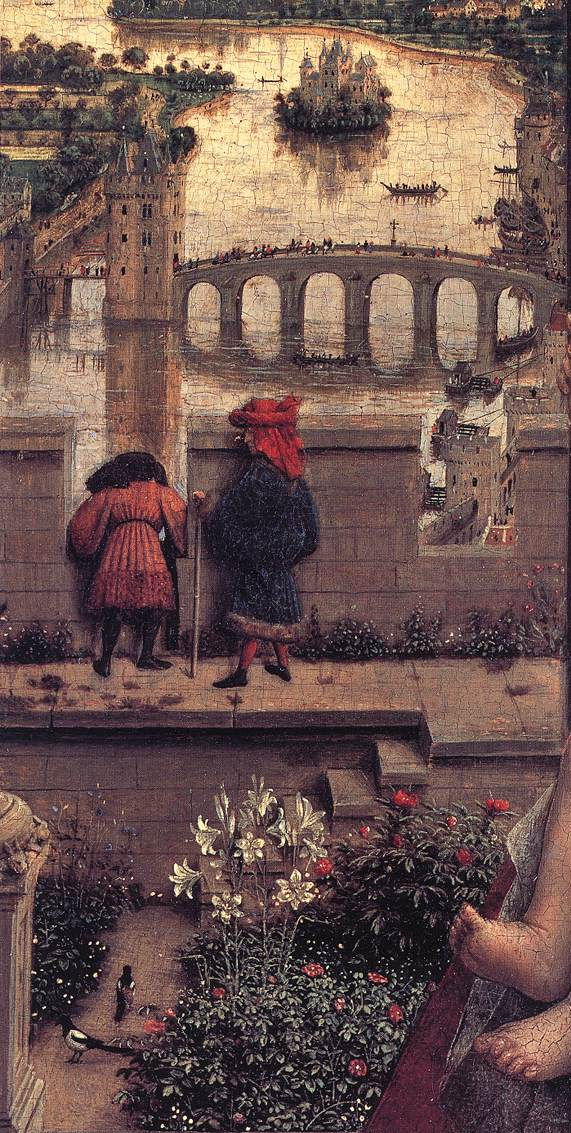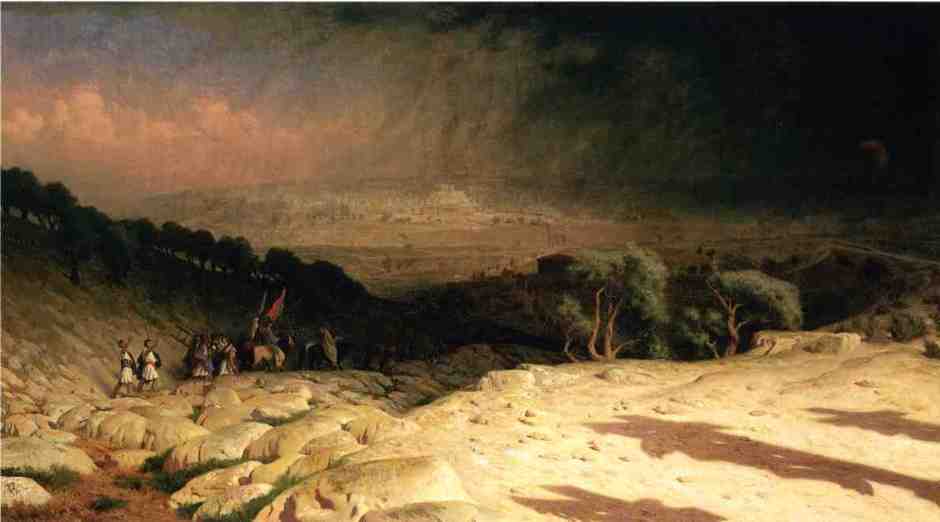Over the last ten articles in this series, I have looked at key changes in painting that have led to modern Realism. This final episode brings those together into a timeline, with links to those previous articles.
Introduction to the series.
Painters in ancient times had used most of the cues used to impart the sense of depth in two-dimensional images, including depth order, relative size, height in the picture plane, texture and detail gradient, and aerial perspective.
Perspective projection had also been developing, and the first truly correctly projected painting that survives is Masaccio’s fresco of The Holy Trinity in the Basilica of Santa Maria Novella, Florence, Italy. This was painted sometime between 1426-28.

This was rapidly followed by more adventurous projections, including Andrea Mantegna’s magnificent Oculus as early as 1473.

9 Linear perspective projection
The depiction of surface texture awaited the development of oil painting, with its advantages of slow drying, a wide range of paint viscosity, a robust paint layer and wide range of pigments showing little or no colour shifts with drying.

Jan van Eyck and other masters of the Northern Renaissance acquired their skills in oils early, here in about 1435, as oil paint had been developed over the previous couple of centuries in northern Europe.

The landscape behind the Madonna of Chancellor Rolin is also one of the earliest examples of the meticulously accurate depiction of reflections on water.
6 Reflections in the landscape
Much later, some painters appear to have intentionally altered their depictions of reflected images.
It was again the painters of the early Northern Renaissance who used reflections in mirrors in figurative images, here Jan van Eyck in this detail from his Arnolfini Portrait of 1434.

Oil paints were introduced to the Southern Renaissance late, but were soon developed with even greater subtlety, as seen in Leonardo da Vinci’s Mona Lisa from 1503-06.

Leonardo used multiple thin glaze layers consisting largely of drying oil with just a little pigment, to develop the subtle shadows of the flesh. This was so admired by other masters of the day that it was named sfumato, Leonardo’s smoke, for its subtlety, and it became a key technique in the depiction of shade and shadow.
By the Renaissance, the depiction of shade and attached shadow was relatively common and uncontroversial. Although there was good understanding of those and cast shadows, the latter usually weren’t shown in paintings. In his didactic writings, Leonardo da Vinci advised painters not to depict cast shadows in their paintings.

Rembrandt’s portrait of a Man in a Gorget and a Plumed Cap from 1626-27 demonstrates the strange effects that cast shadows can have on perception of the face.
3 Cast shadows in figurative painting
Capturing faithful cast shadows in landscape paintings is only successful in limited circumstances, such as when completing a sketch within an hour, or following careful lighting studies. They have also been used occasionally for special effects, as in Jean-Léon Gérôme’s Golgotha from 1867.

Some landscape painters had experimented with wide-angle views before the advent of photography in the early nineteenth century. Once painters saw the optical effects of camera lenses, perspective projections extended to mimic those of wide-angle and telephoto lenses, effects seen in Gustave Caillebotte’s painting of The Pont de l’Europe in 1876, and others.

Photography also brought depth-of-field effects, which are combined with extreme aerial perspective in Eugène Burnand’s Bull in the Alps from 1884.


